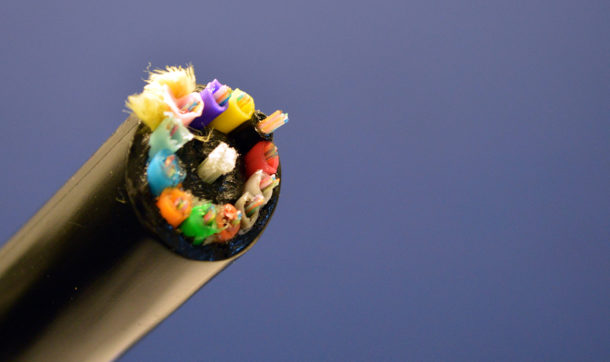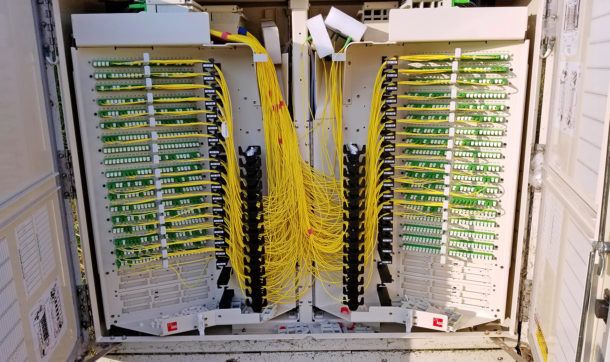Fiber Optics Get Communities up to Speed

 By Scott Olson
By Scott Olson
Businesses and communities that want to compete in today’s fast-paced world of ever-changing technology are turning to fiber-optic networks to give them the speed and reliability they need.
Smaller communities, especially rural ones, have fallen behind when it comes to providing businesses, government buildings, and residents access to high-speed data networks. The landscape is changing, however, as utilities bring fiber to more villages and towns in rural America.
According to the Fiber Optic Association, fiber optics refers to the technology of transmitting light down thin strands of highly transparent material, usually glass but sometimes plastic. Fiber optics is used in communications, lighting, medicine, optical inspections, and to make sensors. Today, fiber optics is either the dominant medium or a logical choice for every communication system. Costs have been reduced so much that fiber to the home is now cost-effective, especially since it can offer services (entertainment as well as communications) that no other medium offers.

Telephone companies, cable TV, and the internet all use lots of fiber optic cables (FOCs), most of which are outside buildings, otherwise known as “outside plant,” or OSP. They hang from poles, are buried underground, are pulled through conduit, or are even submerged underwater. Most go relatively long distances, from a few hundred feet to hundreds of miles.
OSP designers assist utilities in getting their cables, including FOCs, to their customers. OSP FOCs often have very high fiber counts, up to 864 fibers. Cable designs are optimized for the application: cables in conduit for pulling tension and quick repair; buried cables to prevent rodent damage; aerial cables for cost-effective installation; and undersea to connect coastal cities, countries, and even continents.
When fiber-optic high-speed internet comes to businesses and residents in a community, the differences can transform lives overnight. People who are used to limiting their online experiences at home to email and basic internet searches are suddenly able to quickly load graphics-intensive webpages, compete in online gaming, and stream high-definition movies and videos through a variety of providers.
 So how fast is fiber? The short answer is fast. The Federal Communications Commission defines broadband internet as service with a download speed of 25 megabits per second (Mbps) or more. Most fiber services have download speeds up to 1,000 Mbps. At 15 Mbps, it would take about six minutes to download a 30-minute TV episode in HD. At 1,000 Mbps, that would take about six seconds.
So how fast is fiber? The short answer is fast. The Federal Communications Commission defines broadband internet as service with a download speed of 25 megabits per second (Mbps) or more. Most fiber services have download speeds up to 1,000 Mbps. At 15 Mbps, it would take about six minutes to download a 30-minute TV episode in HD. At 1,000 Mbps, that would take about six seconds.
The FCC’s fixed broadband deployment map shows just how far the country has to go to get people “up to speed.”
Recently, Ayres has been designing a variety of fiber projects, mainly for utilities in Florida and Wisconsin. Projects involve the design of new underground and aerial fiber services to existing and new facilities. Our Communications, Gas, and Power (CGP) Group designs, delivers, and documents gas, data, and TV lines while mitigating conflicts and minimizing relocations.
For more on our fiber and OSP design services, check out our projects or contact either of us.
Scott Olson, an OSP designer at Ayres, is experienced in planning, designing, and monitoring complex telecommunication facilities such as copper telephone and fiber optic facilities.

Post a comment: